As the report states, “the quality of our people is the foundation of defence’s capability, effectiveness and reputation”, so ensuring the health and well-being of defence personnel, in what are some of the most extreme environments, is paramount.
At UniSA, researchers are working with defence agencies to examine a whole range of significant human factors – from the impact of caffeine on sleep deprivation, to how the body size and shape of combat troops will change over the next 30 years – to protect and improve conditions for the men and women who serve the nation.
BIOMECHANICAL IMPACTS
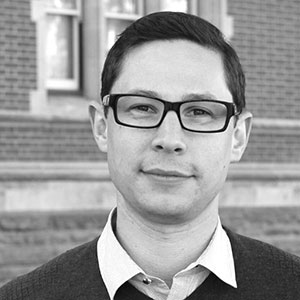 UniSA Senior Lecturer in Biomechanics, Dr Dominic Thewlis and his team, are working with the Australian army to try to understand the effects of vibration on soldiers.
UniSA Senior Lecturer in Biomechanics, Dr Dominic Thewlis and his team, are working with the Australian army to try to understand the effects of vibration on soldiers.
Using a simulation unit developed by the team to recreate the forces and physical conditions experienced by army personnel travelling long distances in ground vehicles over tough terrain, they are testing a whole battery of physical parameters to see if performance is affected.
In UniSA’s advanced biomechanics lab they are simulating land transit in a physical way and through computational simulations.
And in related work they are also using the latest digital modelling technology to predict the appropriateness of spaces for habitation by military personnel.
“We are trying to understand how military personnel are changing in size and shape and how suitable the equipment that is being made now, will be for tomorrow’s troops,” Dr Thewlis says.
“We’re building submarines now that are expected to last at least 30 years but from all the evidence we know that humans are getting bigger, so we want to use anthropometry to predict what that will mean for how we design submarines.
“We understand that in war or conflict the ‘comfort factor’ may not seem that significant, but it can’t be underestimated.
“It can have a huge effect on physical well-being and mental health.
“Simple things such as the size of sleeping bunks can have a big impact on performance.
“Adding a little room to a bunk might mean that service men and women will sleep better – and if they sleep better, research shows, they work better and are less prone to mistakes. A few inches of bunk space could make all the difference when people are living and working in a conflict zone simply by improving one stress indicator – sleep.”
THE BEST FIT
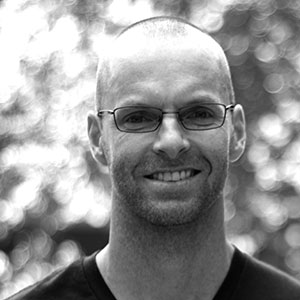 Grant Tomkinson, Senior Lecturer in the School of Health Sciences, who has largely led one of the anthropometry projects and has worked with the Australian Defence Force on such projects for more than a decade, says anthropometric data can support a range of safety improvements.
Grant Tomkinson, Senior Lecturer in the School of Health Sciences, who has largely led one of the anthropometry projects and has worked with the Australian Defence Force on such projects for more than a decade, says anthropometric data can support a range of safety improvements.
“Our data will help to optimise the number of military personnel who can fit into and safely operate the vehicles both now and in the future,” Dr Tomkinson says.
“While our data might affect ergonomic aspects such as fit, task performance and posture, they are also important for survivability modelling. For example, our survey showed that between 1977 and 2015, there was a large increase in standing height of 42-62mm and sitting height of 23-32mm in soldiers.
“These increases effect ceiling clearance and the potential for head injury during a blast event.
“Our survey results highlight the need for updated military anthropometric recruitment standards to most accurately reflect fit requirements for current military vehicles.
“The recent increases in body size and shape in Australian army, airforce and navy personnel, emphasise that the sizing and design of clothing and protective equipment, such as body armour, helmets, and G-suits (worn by fast jet pilots to help prevent loss of consciousness during high G-force manoeuvres), should be reviewed periodically to ensure correct human-equipment fit.”
SLEEP AND SAFETY
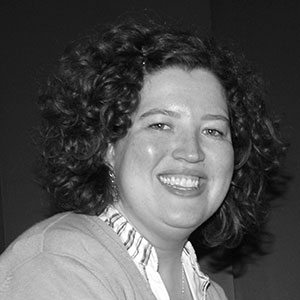 But it is not only body fit that can influence safety, it is also the body clock that can be critical to performance and safety. UniSA sleep researcher, Dr Siobhan Banks and colleague Dr Chris Della Vedova (pictured below) from the School of Pharmacy and Medical Sciences, have been investigating the impact of night-time caffeine consumption during 50 hour periods of being awake.
But it is not only body fit that can influence safety, it is also the body clock that can be critical to performance and safety. UniSA sleep researcher, Dr Siobhan Banks and colleague Dr Chris Della Vedova (pictured below) from the School of Pharmacy and Medical Sciences, have been investigating the impact of night-time caffeine consumption during 50 hour periods of being awake.
“It’s not uncommon for military personnel to be involved in operations that extend past 24 hours,” Dr Banks says.
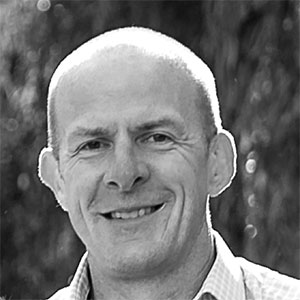 “Long shifts mean sleep deprivation and working through the night at an adverse circadian phase, both of which are associated with various performance impairments, such as decreased reaction time, decreased vigilance and increased sleepiness.
“Long shifts mean sleep deprivation and working through the night at an adverse circadian phase, both of which are associated with various performance impairments, such as decreased reaction time, decreased vigilance and increased sleepiness.
“Sleep loss associated with extended shifts has been found to lead to increased risk of fatigue-related incidents within the military.
“Caffeine is obviously a popular fatigue countermeasure so we want to find out more about its effects.”
Their study looks at the best times to give caffeine to battle tiredness.
While caffeine reduced subjective sleepiness and performance on the first sleep-deprived night, caffeine administration on the second night did not improve how tired subjects actually felt.
“These results demonstrate that while caffeine may be protective against performance impairment, it is less protective in regards to feelings of sleepiness and fatigue,” Dr Banks says.
And while the most obvious source of caffeine is coffee, researchers used caffeinated gum, a faster acting source which takes only 10 minutes to be absorbed by the brain and lasts for 90 minutes.
In another study Dr Banks looked at how caffeine can affect sleep after a long awake period. The study found that while caffeine consumption may impact on the quality of sleep for a short period of the recovery sleep, it does not severely impact sleep initiation, consolid-ation or sleep structure after being awake for 50 hours.
“This means caffeine can be used as a fatigue countermeasure in situations where work hours last 50 hours, without concern that it will adversely impact daytime recovery sleep,” Dr Banks says.
TEAM CULTURE
But more than the physical factors that improve safety, the culture of working life can have a huge impact on the effectiveness of an organisation or operating unit – so it is no surprise that research into high performing teams and leadership is of increasing interest to defence forces globally.
 The performance of military teams and their ability to work together has long been a focus for Christina Stothard, research associate at UniSA’s Centre for Workplace Excellence.
The performance of military teams and their ability to work together has long been a focus for Christina Stothard, research associate at UniSA’s Centre for Workplace Excellence.
“Militaries around the world are recognising that team and organisational learning are critical factors in generating an advantage in the competitive environment of conflict and warfare,” Stothard says.
“Those who learn faster, win. So we are examining the inhibiting effect of power differences in teams on team performance and specifically on team learning.
“We are drawing on social and organisational psychology to see the moderating effects of egalitarianism, cynicism and organisational trust on team learning in the military.
“Essentially, we want to find out what elements in an organisational culture make it okay to tell your boss that they are wrong.
“We are examining some of the factors that make it possible for those in military teams within their strongly hierarchical organisation, to speak up about mistakes or failures, so the team can learn how to do it better next time.”
And while the research is still ongoing, one factor that Stothard has found increases the likelihood of ‘less powerful’ members speaking up, is when they are talking about a shared team goal or mission – but it’s still considered a risk and still needs to be for a very good reason.
ROBOTIC REPLACEMENTS
As defence forces evolve along with the rapid increase of technology – it may be robot combatants that need to be managed in the field.
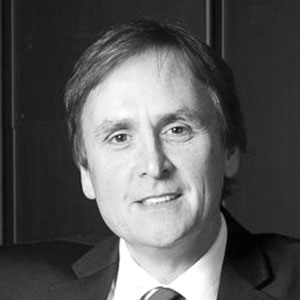 Under a five-year Australian Research Council Discovery Grant, a team of social theorists from across several universities, and led by UniSA’s Dean of External Engagement, Professor Anthony Elliott, is looking at the impact of robotics and artificial intelligence on people, communities, regions and global governance. While the project will be relevant to many industries, it is also set to inform defence.
Under a five-year Australian Research Council Discovery Grant, a team of social theorists from across several universities, and led by UniSA’s Dean of External Engagement, Professor Anthony Elliott, is looking at the impact of robotics and artificial intelligence on people, communities, regions and global governance. While the project will be relevant to many industries, it is also set to inform defence.
“There is big debate at the moment about robots replacing army personnel,” Prof Elliott says.
“Drones are a key example and there’s been a recent contract won by French and British military contractors to design the Taranis drone – a fully autonomous system – for the Royal Airforce in the UK. The Taranis will have autonomous capabilities for selecting and engaging targets using AI.
“This will give defence drones the capability to select and engage targets using artificial intelligence.
“The capacity already exists but under international law there is a requirement for human intervention – someone has got to make a decision to pull the trigger.
“These new drones will be autonomous and they think they can have them operational by 2030 with an investment of more than $2 billion by the British and the French.
“Effectively they are looking at having machines that not only do the flying and the bombing but carry out the complete mission – they are talking about fully autonomous weapons systems.”
Prof Elliott says that – not surprisingly – there is massive debate raging in the public sphere about the ethical and humanitarian concerns that fully autonomous weapons raise.
“This is a huge issue for the military, for defence industries and global politics,” Prof Elliott says.
“It raises so many ethical questions but also questions about how we engage with war if we take human beings out of the decision making equation. How comfortable do we feel with the notion that our national defence could be computerised and automated?
“As social theorists, we are not analysing these transformations as simply a good story or bad story. It’s a very conflicting story and there are many multi-dimensional uses for drones.
“While the technology exists and is being developed, it doesn’t necessarily mean that it will be taken up and adopted. It’s all about how society reacts to and then copes with certain technological changes.
“Our project is concerned with this very big picture – with the social, cultural and political implications of far-reaching advances in artificial intelligence and how such technologies will be applied in both war and peace.”